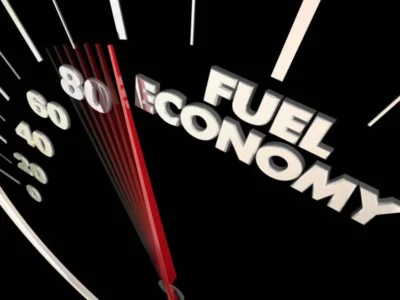California Lawmakers Vote on Energy Affordability Soon
Senate Bill 254 is the most ambitious energy affordability legislation proposed in recent years.
 Energy affordability has been a huge focus in Sacramento as the deadline nears for bills to move out of policy committees. Over the past three years, customers of the largest investor-owned electric utilities (IOUs) in the state have seen their rates rise by an average of 5-41%, with nearly one in five households behind on their electricity bills. Over the past couple of years, policymakers have written reports, held hearings, and committed to the goal of reducing energy burden on California households, but until recently, the bills proposed to address the issue have not addressed the key drivers of high electricity prices.
Energy affordability has been a huge focus in Sacramento as the deadline nears for bills to move out of policy committees. Over the past three years, customers of the largest investor-owned electric utilities (IOUs) in the state have seen their rates rise by an average of 5-41%, with nearly one in five households behind on their electricity bills. Over the past couple of years, policymakers have written reports, held hearings, and committed to the goal of reducing energy burden on California households, but until recently, the bills proposed to address the issue have not addressed the key drivers of high electricity prices.
Now, SB 254 (Becker) is the most ambitious energy affordability bill proposed in recent years. In contrast to most of the bills that neared the finish line last session, which were nibbling around the edges of the issue, SB 254 has real teeth and is cutting to the center of measures that may have real impact. The Appropriations hearing on the bill is scheduled for next Monday, May 12. Here are five key features in SB 254 “Electricity: wildfire mitigation: rate assistance” that could meaningfully lower electricity bills.
1: Wildfire Spending
SB 254 directly addresses the largest driver of electricity bill increases—wildfire spending. Earlier this year, the Legislative Analyst’s Office (LAO) released a report breaking down the biggest drivers of rising electricity prices. The Public Advocate’s Office at the California Public Utilities Commission (CPUC) released a similar report late last year, as well. According to these analyses, one of the largest contributions to rising electricity prices is wildfire spending. Wildfire spending was a negligible portion of rates before 2019, and now wildfire costs make up between 7-13 percent of ratepayer bills for the three largest IOUs (PG&E, SCE, & SDG&E).
SB 254 would target wildfire spending by requiring the CPUC to consider the risk reduction benefit and cost-effectiveness of wildfire interventions. The default in recent years has been to encourage all spending that may reduce wildfire risk, without necessarily prioritizing those interventions that are most cost-effective. A recent UC Berkeley study found that certain grid management techniques (such as “fast trip” settings that cut circuits when a fault is detected) are dramatically more cost-effective than other types of wildfire interventions, such as undergrounding and enhanced vegetation-management. While undergrounding would eliminate an additional 18% of risk beyond that achievable by fast-trip settings, undergrounding all lines in the state would be incredibly expensive. According to the CPUC, undergrounding all of the state’s electric lines would cost about $763 billion (in 2019 dollars). A system of prioritization is necessary, and requiring the CPUC to specifically consider cost-effectiveness in interventions is an essential step.
2: Limiting Profits Utilities Can Receive on Certain Expenses
The bill proposes to securitize $15 billion in wildfire and energization capital expenditures for IOUs, which will prevent the utilities from earning a rate of return on these costs and instead finance them through less expensive ratepayer-backed bonds.
3: Public Financing and Expediting of Clean Energy Resources
The bill also includes measures to reduce the scope of future bill increases by opening up more pathways to public financing of clean energy infrastructure that benefits the public. Public financing of shared electric resources will spread these costs more equitably, rather than targeting a subset of beneficiaries who happen to live within a utility’s service territory. Moreover, utility bills are regressive, with lower-income households spending a higher portion of their income on energy bills, while income tax or property tax is typically more progressive, with higher-income households paying more. Drawing on a program in New Mexico, the bill would create a California Clean Energy Infrastructure Authority, which would be empowered to directly plan, contract, and build electric transmission lines and related storage.
In addition to unlocking public financing, SB 254 also provides for expedited permitting of clean energy infrastructure, through accelerated environmental review and centralized approval at the Energy Commission. Expedited permitting is expected to lower overall infrastructure costs, which would, in turn, reduce future costs on ratepayers.
4: Rebates to Households Least Able to Afford Energy Burden
The bill also would advance distributional equity by redirecting consumer rebates from the cap-and-trade fund. While currently the rebates are spread across all households (on average about $56-$81 per household electric bill in the most-recent six-month installment), SB 254 would retarget the rebates primarily toward low-income ratepayers, providing additional support to the households that most need it.
5: Benchmarking Proposed Rate Increases Against Inflation
SB 254 also includes an innovative new provision that would require utilities in every rate case to submit a modeling scenario that limits rate increases to the level of inflation. If the utility wants to increase rates beyond that level, it must provide “clear and convincing evidence that a higher level of expenditures is necessary to ensure the safe and reliable operation of its electrical or gas system.”
This benchmarking would not prevent rate hikes, but it would at least shift the balance and increase the level of scrutiny of increases. To my knowledge, this approach may be the first of its kind, though ratepayer advocates in Oregon last year proposed an inflation-based cap on rates.
Looking Beyond Wildfire Measures
Collectively, these features in SB 254 offer tremendous promise to tackle some of the major factors increasing California’s electricity prices.
In contrast to the sweeping SB 254, last year’s energy affordability bills were much more limited in scope. AB 3121, for example, would have dismantled public benefit programs (including health-improving programs to retrofit school’s HVAC systems and low-income clean energy rebates) to provide a one-time $30-$70 savings on electricity bills. That’s a drop in the bucket compared to the larger drivers of rising bills and would have sacrificed programs that benefit lower-income communities for a relatively small, one-time rebate to all ratepayers. Three energy bills passed last session: a transmission cost study bill (AB 3264), a bill to streamline hydrogen facility permitting (SB 1420), and a bill that prevents power shutoffs for households on payment plans (SB 1142). None of the bills that passed are expected to meaningfully lower electricity rates.
The two other main energy bills from last session have been adapted into portions of SB 254. Last year’s SB 1272 was designed to speed permitting of renewable energy resources, and SB 1003 would have updated utility wildfire safety planning to focus more on the cost-effectiveness of risk reduction. Portions of both of these 2024 bills have been included in 2025’s SB 254.
Last year, legislative leadership indicated that energy affordability would be a two-year effort. The devastating Eaton and Palisades fires in January threatened to slow some of last year’s momentum by (understandably) drawing away policymaker interest, and further increasing utility spending on wildfire measures. And indeed, there is another bill pending that would accelerate the approval of undergrounding electric infrastructure (SB 256), which could further drive up electricity rates. However, it is heartening that, despite the challenges earlier this year, SB 254 has been introduced to address some of the key drivers of high electricity prices in California.
Reader Comments
2 Replies to “California Lawmakers Vote on Energy Affordability Soon”
Comments are closed.







A further note: SB 500 by Stern has a broader focus for implementing performance based ratemaking (of which an inflation benchmark is one component). It passed out of SEUC last week. https://legiscan.com/CA/text/SB500/id/3191037
SB254 is being pushed by Western States Petroleum Association with a slick ad campaign that airs repeatedly on Dodgers TV broadcasts. I’m skeptical that WSPA is promoting a bill that has these features in terms of electricity rates and wildfire mitigation. What’s in it for them?